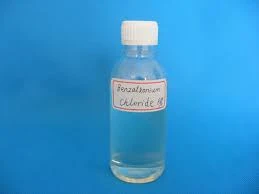Understanding the Composition and Uses of Poly Aluminium Chloride in Various Industries
What is Poly Aluminium Chloride?
Poly Aluminium Chloride, commonly abbreviated as PAC, is a widely used chemical compound predominantly employed in the water treatment industry. Its chemical formula can be represented as Aln(OH)mCl(3n-m), where n and m refer to varying degrees of polymerization and hydroxylation. This compound is known for its high efficiency in coagulating and flocculating contaminants in water, making it an essential agent in both drinking water purification and wastewater management.
PAC is a type of coagulant that helps in the removal of suspended particles, colloids, and turbidity from water. When added to water, PAC reacts with impurities, forming larger aggregates or flocs that can be easily separated from the liquid phase. This process is crucial in water treatment facilities, where achieving clean and safe drinking water is the primary objective.
What is Poly Aluminium Chloride?
One of the primary advantages of using PAC over traditional aluminum sulfate (Alum) is its effectiveness at a lower dosage. PAC can achieve similar or superior coagulation performance while using significantly less chemical, which not only reduces costs but also minimizes the environmental impact associated with excessive chemical use. Furthermore, PAC tends to produce less sludge, which is a critical factor in maintaining efficient operations at treatment facilities.
what is poly aluminium chloride

The versatility of PAC extends beyond water treatment. It is also utilized in various industries such as paper manufacturing, textile processing, and even in cosmetics. In the paper industry, PAC acts as a retention aid, helping to achieve better fiber retention during the papermaking process. In textile applications, PAC is used in dye fixation, ensuring that colors remain vibrant and do not wash out easily.
Safety considerations are paramount when it comes to the use of PAC. While it is generally regarded as safe for water treatment purposes, appropriate safety protocols should be followed during handling. Protective gear such as gloves and goggles should be worn to avoid contact with the skin and eyes. Additionally, it is essential to adhere to local regulations regarding the permissible levels of residual aluminum in treated water, ensuring that public health and environmental standards are maintained.
Research and development in the field of PAC continue to evolve. Scientists are continuously exploring ways to enhance the efficiency of PAC formulations and to discover new applications. For instance, modifications to the polymer structure or the incorporation of other chemicals can improve its performance in specific contexts, thereby broadening its applicability in various industrial sectors.
In conclusion, Poly Aluminium Chloride is a critical component in modern water treatment processes. Its ability to effectively coagulate contaminants while offering environmentally friendly advantages makes it a popular choice among operators in the water treatment industry. With ongoing research and advancements, PAC is expected to maintain its significance as a vital chemical in ensuring safe and clean water for communities around the world. Whether it is used in municipal treatment plants, industrial applications, or even in household settings, PAC demonstrates the importance of chemistry in addressing global water challenges.
-
Water Treatment with Flocculant Water TreatmentNewsJun.12,2025
-
Polymaleic AnhydrideNewsJun.12,2025
-
Polyaspartic AcidNewsJun.12,2025
-
Enhance Industrial Processes with IsothiazolinonesNewsJun.12,2025
-
Enhance Industrial Processes with PBTCA SolutionsNewsJun.12,2025
-
Dodecyldimethylbenzylammonium Chloride SolutionsNewsJun.12,2025





